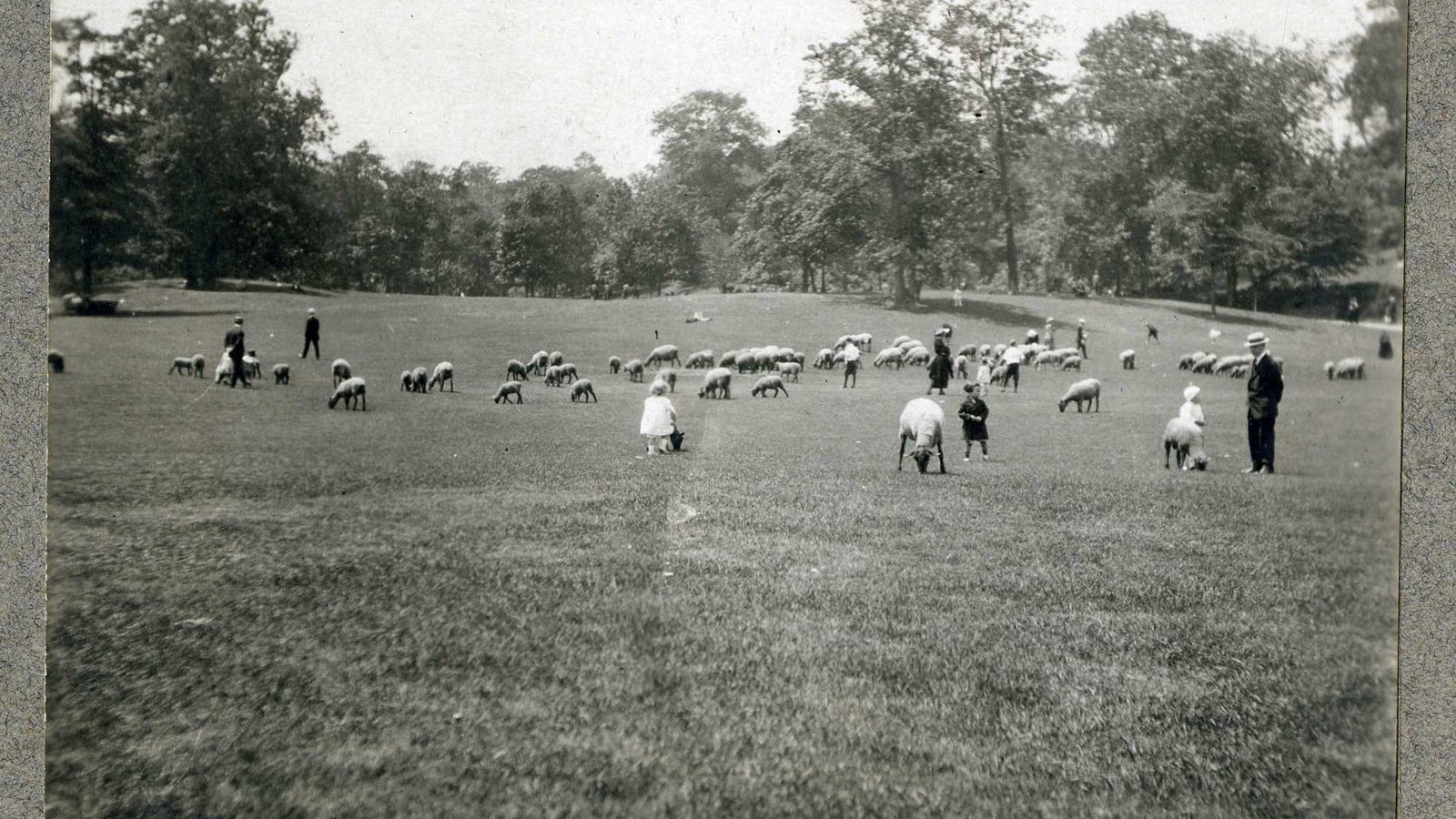Last updated: June 11, 2024
Place
Prospect Park

Olmsted Archives
Quick Facts
Location:
New York City, NY
Significance:
Olmsted Designed Landscape
MANAGED BY:
Frederick Law Olmsted already had his tour of English parks when Calvert Vaux convinced him to rejoin the partnership and submit a plan for the development of Prospect Park. In the 1860’s Brooklyn was its own city, the third largest in the country, and was jealous of the success Central Park was having.
James S.T. Stranahan, a successful civic leader in Brooklyn led the effort in the creation of a park. Stranahan argued that Brooklyn “would become a favorite resort for all classes of our community, enabling thousands to enjoy pure air, with healthful exercise, at all seasons of the year.”
Stranahan received the first park design from Egbert L. Viele, the man who had proposed the first layout for Central Park before Olmsted and Vaux’s Greensward was chosen. Stranahan asked Vaux to sketch a layout for the park, who then reached out to Olmsted, finishing up his work with the United States Sanitary Commission.
Construction at Prospect Park began July 1st, 1866, with Stranahan serving as President of the Prospect Park Commission. Where in Central Park Olmsted and Vaux had to overcome the lands narrow shape and large reservoir at the center, in Prospect Park the two took full advantage of natural elements, such as old-growth forests.
As the years went by, Olmsted’s desire to keep statues out of Prospect Park was forgotten, and the park now boats dozens, including one of James S.T. Stranahan. In fact, of the many statues across our country of Abraham Lincoln, the first resided, and still does, in Prospect Park.
Source: "Prospect Park," The Cultural Landscape Foundation
For more information and primary resources, please visit:
Olmsted Research Guide Online
Olmsted Archives on Flickr
Olmsted Online
James S.T. Stranahan, a successful civic leader in Brooklyn led the effort in the creation of a park. Stranahan argued that Brooklyn “would become a favorite resort for all classes of our community, enabling thousands to enjoy pure air, with healthful exercise, at all seasons of the year.”
Stranahan received the first park design from Egbert L. Viele, the man who had proposed the first layout for Central Park before Olmsted and Vaux’s Greensward was chosen. Stranahan asked Vaux to sketch a layout for the park, who then reached out to Olmsted, finishing up his work with the United States Sanitary Commission.
Construction at Prospect Park began July 1st, 1866, with Stranahan serving as President of the Prospect Park Commission. Where in Central Park Olmsted and Vaux had to overcome the lands narrow shape and large reservoir at the center, in Prospect Park the two took full advantage of natural elements, such as old-growth forests.
As the years went by, Olmsted’s desire to keep statues out of Prospect Park was forgotten, and the park now boats dozens, including one of James S.T. Stranahan. In fact, of the many statues across our country of Abraham Lincoln, the first resided, and still does, in Prospect Park.
Source: "Prospect Park," The Cultural Landscape Foundation
For more information and primary resources, please visit:
Olmsted Research Guide Online
Olmsted Archives on Flickr
Olmsted Online
